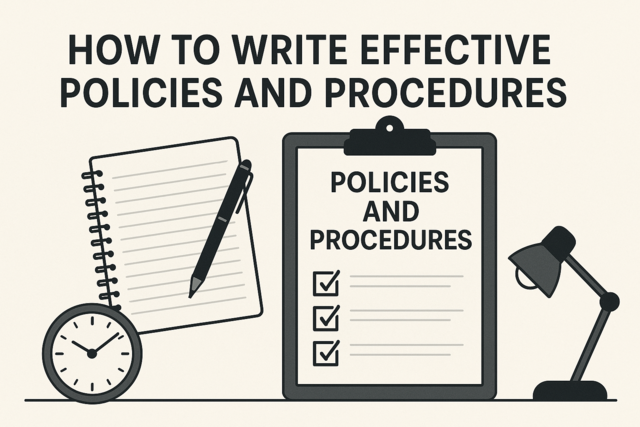The present participle clause
In upper intermediate classes, an issue has often come up with my students concerning a certain kind of participle clause, the present participle clause (the -ing form of a verb). The issue also has to do with the preposition "to."
Students look at that sentence and think that "to living" is some kind of form of the infinite "to live."
They think it must be a mistake, since they have learned very well sentences such as "I want to live in New York" and they have learned that they cannot say "I want to living in New York."
They have learned continuous tenses and know a proper form is "I am living in New York" and not "I am to living in New York."
How to explain the present participle clause
So the first thing I have to show the students is that "to" in the sentence "The upside to living in New York is the nightlife" has nothing to do with being part of an infinite of the verb.
In the sentence "The upside to living in New York is the nightlife," the "to" functions as a preposition, as in "I go to New York." The "to" is a part of "the upside to" and not a part of "living in New York."
But this explanation is often not enough. They still see the sentence as appearing bizarre. They can't get over the formulation "The upside to living in New York."
So that is when I show them that "living in New York" is a clause that exists on its own, and can be thought of the same way as just a single noun, in terms of the way it can move around in a sentence.
I go through an explanation with several steps.
I show them that simply "New York" can be substitute into that sentence:
The upside to [living in New York] is the nightlife.
The upside to [New York] is the nightlife.
Then I show them that "living in New York" can be moved around in sentences the same way a simple noun can be moved around in a sentence:
[New York] is great.
[Living in New York] is great.
I like [New York]
I like [living in New York].
She thinks [New York] is expensive.
She thinks [living in New York] is expensive.
Then I go back to the first sentence and show them that "the upside to" is just another way to say, for example, "The good thing about":
The upside to [living in New York] is the nightlife.
The upside to [New York] is the nightlife.
The good thing about [New York] is the nightlife.
The good thing about [living in New York] is the nightlife.
Then I substitute a pronoun to further drive home that "living in New York" functions the same way as a noun:
I like [living in New York].
I like [it].
[Living in New York] is great.
[It] is great.
Once the students have seen the problem boiled down to a simple sentence like "It is great," they start to fully understand the concept. Then I sometimes follow it up with several sentences related to advantages and disadvantages, so they can see the concept in action:
The advantage of living in New York is the nightlife.
The disadvantage of living in New York is the high cost of living.
The downside to living in New York is the high cost of living.
By this point, they have overcome the problematic appearance of "to living" in these sentences; they might not even see it anymore and instead the parts of the sentences separately in parts that now make sense to them:
The downside to living in New York is the high cost of living.
In a regular English class this could be a part of a classroom lesson on the subject of participle clauses. In an ESL class, you can explain the whole thing (as above) without ever mentioning the words "participle" or "clause."
Now we will explore a lesson plan dealing with participle clauses in the context of learning to talk about pros and cons.
Lesson Plan
-Vocabulary: the nouns upside, downside, drawback, shortcoming, aspect, pace
and the expressions "That's what they say" and "the pros and cons."
This lesson on how to express pros and cons is an upper-intermediate or advanced level class. Students would already be familiar with modals.
Presentation
Present the new vocabulary. After you present "pros and cons" you could take a minute to have students call out pros and cons of where they live or of fast food, etc.
Then present this full list on the board, having the students read it aloud:
Expressing pros and cons:
Positive Expressions -----------Negative Expressions
The advantage of One disadvantage of
The good thing about The bad thing about
The nice thing about One drawback of
The benefit of/to A shortcoming of
A positive aspect of One negative aspect of
The upside of/to The downside of/to
Tell the students that all the positive expressions have the same meaning, as well as all the negative expression. Point out the different prepositions.
Then give them some example sentences. These also show different prepositions used with "upside":
The upside to living in New York is the nightlife.
The upside to New York is the nightlife.
The downside of living in New York is that you can't avoid the crowds.
The downside to living in New York is that you could have to work long hours.
Point out that when a noun follows "is" in the first sentence, we don't use "that" afterwards.
Point out we need a "that" when "is" is followed by something that could be a sentence on its own (an independent clause) like "you can meet people from all over the world" and "you could have to work long hours."
Go through the examples, reading them out loud and having the students repeat, with different expressions in place of "upside" and "downside" and point out how the preposition changes. For example:
The good thing about living in New York is the nightlife.
Practice
Practice 1
You can start with a text with the techniques we have covered (reading it aloud and having students answer comprehension questions, fill in blanks while listening, etc.) Always read a text twice, put comprehension questions on the board, and have the students answer afterwards.
What does Rachel like about New York?
What does Rachel not like about New York?
Samantha: What are the pros and cons of working at a big company in New York?
Rachel: The good thing about living in New York is that it's a really exciting city. There's so much to do, day and night.
Samantha: But what about your job?
Rachel: Well, the downside to working in a big company in New York is the crazy pace. Everyone is expected to work long hours.
Samantha: But the upside is that if you can be successful in New York, you can be successful anywhere.
Rachel: That's what they say. But one of the drawbacks is that New York is dirty.
After you have presented the text in some way and provided the text, have the students underline parts in the text with grammar similar to that in the Presentation.
Practice 2
This exercise tests the students' understanding of the expressions from the vocabulary presentation.
Fill in the blanks with the right expression from the list:
one nice thing, drawbacks, the negative aspect, advantages, benefit
1. ____________________ of living in Los Angeles is the traffic.
2. One of the ____________________ of cooking your own food is that it's healthier.
3. The ____________________ of working at home is that you don't have to commute.
4. ____________________ about travelling is the feeling of being free.
5. The ____________________ to working in China are pollution and lack of freedom.
Practice 3
This exercise tests the students' ability to construct sentences with the expressions. Point out the two kinds of sentences (one with a full independent clause after "is" and the other with a simple noun after "is"). Make sure students write one of each for each subject.
Write two sentences about each subject using the different expressions.
Example: living in New York
The advantage of living in New York is that you can find stores open all night.
The bad thing about living in New York is the pollution.
1. fast food
2. surfing the Internet.
3. mobile phones
4. taking the bus to work
Monitor the students and make sure they end up with good sentences. This is your chance to make sure the students understand how to express pros and cons using the expressions so they are ready for the Production.
Then have the students read their sentences out loud. Have all the students read their sentences about fast food and then surfing the internet, etc. This prepares them for the Production.
Production
Put the students in pairs and have them discuss freely.
Discuss each the pros and cons of each situation. Ask and discuss:
What are the advantages of disadvantages of.?
What are the pros and cons of.?
1. driving to work vs. taking the bus
2. a vacation in the mountains vs. a vacation in a big city
3. eating at home vs. eating out
4. going to a sporting event vs. watching it on TV
5. having a professional paint your room vs. doing it yourself
6. working at home vs. working at an office
7. going to school vs. learning online
8. watching movies at home vs. going to the cinema
9. a big car vs. a small car
10. saving money vs. spending money
11. living in the city vs. living in the country
Songs
In Lesson 20 we will learn in detail how to use songs in the classroom, but in the meantime here are some songs that can be used to teach the grammar from this lesson:
-"Chain Gang" by Sam Cooke has lyrics showing the grammar form like this:
That's the sound of the men working on the chain gang
Working on the highways and byways
-"Lovin' You" by Minnie Riperton has these lines:
Loving you is easy 'cause you're beautiful
Making love with you is all I wanna do
Loving you is more than just a dream come true
And everything that I do is out of loving you
'Cause loving you has made my life so beautiful
And every day of my life is filled with loving you
Loving you, I see your soul come shining through
-"Breaking up is hard to do" by Neil Sedaka (also covered by The Carpenters) repeats the title over and over and includes the line "Instead of breaking up I wish that we were making up again."






















